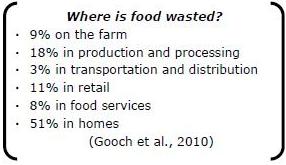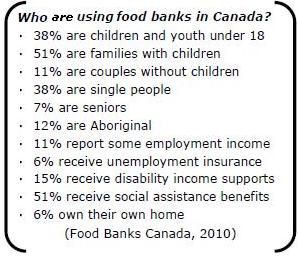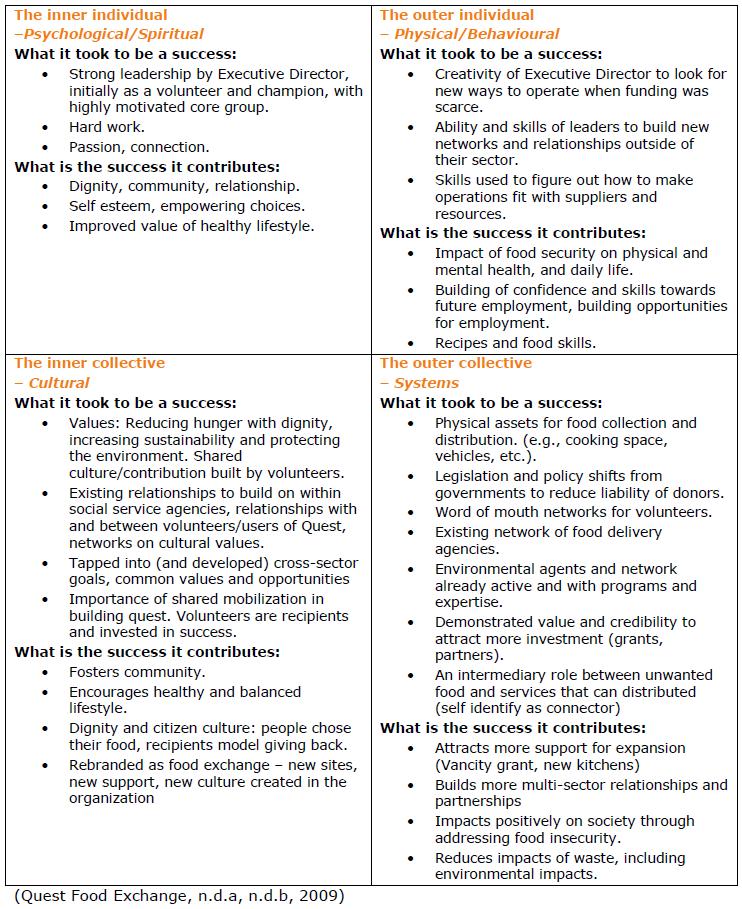A student response to CRC case study
Background to Analysis
This page features an analysis of the CRC case study "QUEST: Quality Urban Energy Systems of Tomorrow An Integrated Regional District Energy System". The analysis was conducted and prepared in July, 2011, by students of the Masters of Arts in Community Development Program at the University of Victoria. The student team that authored the analysis conducted the work within the course, MACD510: Leadership, Management, and Governance. The student team consisted of Nicole Graham, Monique Lacerte-Roth, Angela Pinchero, and Brenda Wagman, and the facilitator of the course was Dr. Heather McRae.
Background to Case Study
Quest Outreach Society (Quest) was started in Vancouver, British Columbia in 1989 with a youth group who decided to make sandwiches and hand them out to individuals in Downtown Vancouver‟s East Side (Quest Food Exchange, n.d.a). They received such a positive response that they set up a soup kitchen named „The Quest‟ and ran out of the basement of Saint James Anglican Church (Quest Food Exchange, n.d.b).
Quest grew quite quickly as an organization and by 2002 aided thousands daily (Quest Food Exchange, n.d.b). Their vision is to “become the medium between suppliers of unwanted food and social service agencies that could use and distribute it” (Quest Food Exchange, n.d.b, para 6). Quest has received several donations through the years including $97,000 from the CKNW Orphans Fund, $35,000 from BC Technologies Social Venture Partners, and the $1 million VanCity Award (Quest Food Exchange, n.d.b).
Quest provides food assistance to individuals and families through their four food distribution programs: three low-cost food stores, gift certificates, bulk food purchases and their community kitchen (Quest Food Exchange, n.d.b). Quest partners with local food wholesalers, restaurants, airlines, freight lines, supermarkets and farmers who donate food that would have otherwise been wasted (Quest Food Exchange, n.d.a). Quest has a zero-waste policy and recycles, reuses, donates and diverts all waste that goes through their facility creating compost, livestock feed and other useable by-products (Quest Food Exchange, n.d.b).
Quest is a registered charitable organization currently administered under the leadership of an interim executive director and eight board members (Quest Food Exchange, 2009). Remarkably, in 2010 Quest rescued $3.9 million dollars of food, diverted 366 cubic yards of recycled material from the landfill, and has grown to involve 394 partnering social service agencies, 390 partnering food suppliers, 14,486 donated volunteer hours, 23 paid employees and enabled 140,337 shopping trips in their food stores (Quest Food Exchange, n.d.b).
Leadership
In analyzing the leadership model used by Quest in relationship to our course material, we found that it embodied aspects of several leadership frames. Strong connections to three models were particularly noted: Social Change, Community Leadership and Shared/Distributed Leadership. Main observations include the belief of the first executive director (and founder of the expanded Quest enterprise) in making a significant contribution to the community; the commitment by the organization to build capacity „in the ranks‟ and make changes that had community-wide impact; and the organization‟s leadership has sufficient personal relationships and influence to „make things happen‟ (Geurin & Herbert, n.d.).
The following models were less apparent in the analysis: Learning and Leadership; Change/Adapt Leadership and Development Perspectives. Although the organization claims to have taught skills to its volunteers who worked in their low cost stores, leading to some employment, a more comprehensive plan to train volunteers was not evident on the website or in the case study. It is obvious that an organization that has grown exponentially over the past decade must have employed some change strategies, but these are not discussed openly in the public domain. Finally, the founder‟s passion (and closely held control of information) must have played a significant role in her ability to remain resilient under such pressures. Again, this is not discussed openly, but information in the case study indicates that the founding executive director was to be the only spokesperson for the organization, not board members nor staff or volunteers (Geurin & Herbert, n.d.) – all of whom would be natural sources for providing organizational information.
Issues
How much food is wasted in Canada and why?
Using Statistics Canada and industry numbers, a study done by the George Morris Center (Gooch, Felfel & Marenick, 2010) estimated that the difference in value between how much food is produced on farms, processed, distributed and sold every year in Canada and the value that is actually consumed every year in Canada represents 27 billion dollars.
It is helpful to provide a context for food waste. Some of the food wasted at production and throughout the system is by design. Intentional overproduction is built in to meet quotas and maintain consumer expectations of aesthetic produce or uninterrupted supply. Inefficiencies or breakdowns in the distribution chain can also happen at any point, but become more likely or frequent when food systems become complex and require more management.

Finally, food may be wasted because the benefits of redistribution or the impact of food waste is not obvious at any point in the system (Gooch et al., 2010).
Who is in need of food support in Canada and why?
Regular monitoring of food banks across Canada indicate that the need for food support has been dramatically increasing. For example “[i]n March 2010, 867,948 people were assisted by food banks in Canada...the highest level of food bank use on record” (Food Banks Canada, 2010, p. 2). The increase from the previous two years was a staggering 28%, resulting in 35% of food banks running out of food in 2010 despite assistance from other social service groups (Food Banks Canada, 2010). Some people in need of food support do not use food banks but rely on other venues such as soup kitchens and school lunch programs. Food Banks Canada (2009) estimates that 2.7 million Canadians, that is 8.8 % of the population, experience food insecurity at some point during the year.

What role can governments and their policies play in diffusing or replicating the Quest model in other Canadian communities?
Government policies and legislation can play an essential role in developing and implementing the Quest model in other communities. Safety and liability are major issues in handling and distribution of food in any circumstances and, as identified in the Quest case study, the Government of British Columbia‟s legislation protecting well-intentioned food donors from liability has been a decisive factor in Quest‟s success (Geurin & Herbert, n.d.). As stated in the case study, “[t]his policy enables suppliers to donate food without the fear of legal liability from any potential negative impacts incurred as a result of consuming the food, such as food poisoning(p. 4).
Government policies and legislation could also play a broader role in reducing unnecessary food waste if priority is given to that goal. Current policies at the provincial and federal levels make it “too easy and too cheap to dump” (Canadian Processor, 2010, as cited in Gooch et al., 2010, p. 7) so that “processors view dumping organic waste as making the most economic sense” (Gooch et al., 2010, p. 7). Moreover, policies and regulations can restrict the extent to which food producers can change their approaches to marketing their products (Gooch et al., 2010). However, reducing food waste is often overshadowed by hunger solutions that focus on advocating for government policies to prevent poverty despite the need for both strategies. The HungerCount 2010 report provides a prominent example: food waste is not mentioned in the report‟s eight recommendations for reducing hunger (Food Banks Canada, 2010).
Beyond policies and legislation, governments can be effective by supporting partnerships and voluntary initiatives to reduce food waste and hunger while benefitting the environment (Gooch et al., 2010).
Which provinces and territories have legal provisions supporting food waste donations?
In Canada, nine provinces and two territories have „Food Donation Act‟ legislation which encourages food providers to donate to the public good while protecting them from liabilities associated with that food. In all cases, only the donor is protected while the organization serving or selling the food assumes the liability and therefore must ensure due diligence in inspecting and sorting out food that is not fit for human consumption. These laws were enacted across Canada beginning in the early 1990‟s and continued through to 2008 (Longchamps & Wright, n.d.). Research revealed three gaps in Canadian coverage by these laws: Quebec, Nova Scotia and Nunavut.
Can the Quest model be easily replicated in other Canadian urban centres?
An assets mapping for the Quest intervention model was done using an integral framework that plots assets against four quadrants: inner individual, outer individual, inner collective, and outer collective (Appendix A). The assets in the mapping were determined by analyzing publicly available information that considered assets contributing to the organization‟s success and assets built by that success (Quest Food Exchange n.d.a, n.d.b, 2009).
Several observations from the mapping were particularly notable;
- the mapping process was useful to understand what assets may be needed to build similar interventions in other centres, for example the asset of having an existing network of food delivery agencies,
- both structural and cultural assets were important to the success of a Quest style intervention, and also would be generated by the intervention. Examples are having existing relationships to build on and developing shared mobilization where volunteers are recipients and invested in the intervention's success,
- and, the process highlighted leadership assets throughout the organization and community which informed the leadership frame analysis above. An example from the mapping is the ability and skills of leaders to build new networks and relationships outside of their sector.
Conclusions and Recommendations
Other models for reclaiming and redirecting food waste do exist – this is not a concept solely created by Quest. The change in systems initiated by the Quest intervention are large scale and highly successful. This intervention focuses on reducing pressures on food banks, reducing hunger and malnutrition, diminished environmental impact of food waste and building the personal assets of individuals. It also may have other impacts such as reducing the costs of healthcare related to poverty and creating new systems for multi-sector cooperation or coordination in meeting the needs of food service users.
The following recommendations aim to facilitate interventions to redirect food waste to those who need food support.
Recommendations
Recommendations to expand and improve the Quest style intervention include;
Culture and knowledge
-
- Raise awareness about the volume and type of food wasted, the social and environmental impact of food waste, and the impact on the food distribution supply including retail costs. Also, increase awareness on the need for food, the social and environmental impact of redirecting food, the opportunities for intercepting food waste and cross-sector cooperation to redirect it.
- Share information and be transparent about successful interventions like Quest. Information about operations and impacts should be made available, learned from and adapted in other areas.
- Remove the stigma of gleaning. Encourage creative gleaning projects that meet food demands.
- Make relevant guides and materials available to food service providers, retailers and others, for example “Food Donation - A Restaurateur's Guide (Walsh Featsent, 1997). Information on opportunities to redirect food and the impact of Quest style interventions so that they can be motivated or empowered to lead similar coordination efforts.
Relationships and coordinating capacity
-
- Relationships should be built across sectors. Social service and social change stakeholders should be central to any discussion or initiative. This lays the ground work for identifying opportunities and self organizing.
- Coordinating opportunities should be identified and networks built between food distributors, retailers, farmers, service providers and other stakeholders likely to contribute in-kind inputs.
Physical and financial assets
-
- When opportunities, relationships and coordinating capacity are present, physical inputs and assets for the intervention should be supported. These include space for food preparation or distribution, appropriate transportation facilities, core funding or seed funding that will create stability and capacity in the network.
Policy and legal
-
- Regionally appropriate economic and legal policies that encourage food donation should be enacted.
Long-term
- The food waste issue and the impact on food distribution and pricing should be studied further and empirical evidence gathered.
- Opportunities for systems, policies and mindset shifts should be identified to encourage food systems change and less food waste so that healthy fresh food is more accessible to restricted income households.
- Pursuing the above recommendations and implementing more programs like Quest would reduce landfill waste, increase recycling initiatives, combat environmental degradation and positively impact communities through providing food to those in need.
Integral mapping of Assets of the Quest Food Exchange Intervention
Resources and References
Food Banks Canada (2009). HungerCount 2009. A comprehensive report on hunger and food bank use in Canada, and recommendations for change. Retrieved July 8, 2011, from http://www.cafb-acba.ca/documents/HungerCount2009NOV16.pdf
Food Banks Canada (2010). HungerCount 2010. A comprehensive report on hunger and food bank use in Canada, and recommendations for change. Retrieved July 8, 2011, from http://www.foodbankscanada.ca/documents/HungerCount2010_web.pdf
Guerin, G. & Herbert Y. (n.d.). Quest Food Exchange. Sustainability Solutions Group. Retrieved July 8, 2011, from /case-studies/crc-case- studies/quest-food-exchange
Gooch, M., Felfel, A. & Marenick, N. (November 2010). Food waste in Canada. Opportunities to increase the competitiveness of Canada’s agri-food sector, while simultaneously improving the environment. Value Chain Management Centre. Retrieved July 7, 2011, from http://www.georgemorris.org/aspx/Public/Utils/ DbFileViewerPopup.aspx?FileID=394
Longchamps, D. & Wright, B. H. (n.d.). Provincial and Territorial Statute Correlation. Canadian Hospitality Law: Liabilities and Risk, Third Edition. Retrieved July 7, 2011, from http://www.longchamps3e.nelson.com/student/Statute%20Correlation.pdf
Quest Food Exchange. (n.d.a). About Quest Food Exchange. Retrieved July 12, 2011 from http://questoutreach.org/about
Quest Food Exchange. (n.d.b). History of Quest Food Exchange. Retrieved July 12, 2011 from http://www.questoutreach.org/about/history.html
Quest Food Exchange. (2009). The Quest Spirit 9(3). Retrieved July 12, 2011 from http://www.questoutreach.org/files/newsletters/2009winter.pdf
Walsh Featsent, A. (1997). Food donation - a restaurateur’s guide. Retrieved July 7, 2011, from http://www.scribd.com/doc/51473642/Food-Donation-A-Restaurateur-s-Guide
